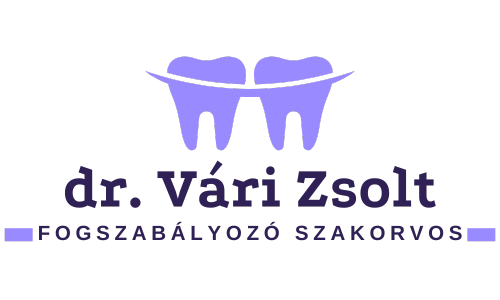Fixed Appliances
Teeth are moved using wires attached to brackets bonded to the teeth. The primary goal is to achieve a beautiful smile, but from a medical perspective, proper bite alignment is equally important—this occurs when the two dental arches close together correctly. Patients achieve this alignment by connecting elastic bands between their teeth in various configurations, following the doctor's instructions.

Orthodontics Without Tooth Extraction
In traditional orthodontic treatments with fixed appliances, tooth extraction is often necessary, typically involving premolars. Extractions create space to relieve crowding and correct bite discrepancies (distoclusion or mesioclusion). They also help close open bites. However, removing healthy teeth can negatively affect facial aesthetics, pushing the front teeth back and causing the lips and midface to appear sunken, a condition that may worsen with age.
In conventional fixed orthodontics, teeth are often extracted for minor crowding because large forces cause the front teeth to tip outward, making alignment difficult. The Damon® technique resolves crowding without extractions by using low forces that allow the dental arches to expand and create space, maintaining the front tooth position. This results in a wider smile and a harmonious facial profile. Bite discrepancies can also be corrected with elastic bands, without the need for extractions.
With the Damon® system, tooth extraction is only performed in 5-10% of cases, and only when necessary for facial aesthetic reasons, particularly in cases where the front teeth are excessively tipped outward, negatively affecting the profile. In such instances, extraction ensures the best facial aesthetic outcome, resulting in a beautiful, harmonious profile and midface.

Types of Appliences
Metal
They are made of metal (cast metal), and are metal-colored, traditional brackets. The different wires are secured to the brackets with elastic ties. This type is the most affordable, but it is the least efficient and hygienic, as the elastic ligature hinders tooth movement and allows food particles to accumulate around and under it, making cleaning difficult.
Metal Self-Ligating
Self-ligating appliances, also known as self-ligating braces, feature brackets that open and close like a latch or door, eliminating the need for elastic ligatures. This reduces friction, allowing smaller forces to move the teeth, making treatment more efficient. These braces are more hygienic than traditional ones, with fewer plaque-retentive surfaces that are easier to clean. They can be made of porcelain or metal.
Ceramic
They are made of porcelain, sapphire crystal, or corundum (polycrystalline aluminum oxide). Their common characteristic is that they are molded from tooth-colored or porcelain-colored materials, making them virtually invisible from a distance. These braces offer an aesthetic solution for those seeking less noticeable orthodontic treatment while still being effective.
Ceramic Self-Ligating
Self-ligating appliances, also called self-ligating braces, feature brackets that open and close like a latch or door, eliminating the need for elastic ligatures. This reduces friction, allowing smaller forces to move teeth efficiently. These braces are more hygienic than traditional ones, with fewer plaque-retentive surfaces that are easier to clean. The materials used can be either porcelain or metal.
Frequently asked questions
Answers to Your Most Common Orthodontic Questions
Why is a fixed retainer alone not enough to hold the teeth in place after orthodontic treatment?
Bonded retainers are attached to the inner surfaces of the incisors or front teeth and are designed to prevent these teeth from shifting. However, without wearing the retention splint as well, the lateral teeth (the side and back sections of the dental arch) can collapse, as nothing holds them in their new position.
A part of my orthodontic appliance broke off. Should I see my dentist immediately?
If the broken part doesn't irritate your mouth or interfere with eating or speaking, it’s okay to wait until your next scheduled appointment. If it causes discomfort or irritation, contact your dentist as soon as possible.
Why do my teeth hurt after my orthodontic appliance has been activated?
Sensitivity and discomfort after activation are normal, as the tension from the archwire causes the teeth to start moving. This pain typically subsides after a few days, and mild pain relievers (e.g., ibuprofen) can help. If the pain persists or is severe, consult your orthodontist.
Can I play sports with fixed braces?
Yes, you can play sports with fixed braces. However, for contact sports (e.g., football, basketball), it is recommended to wear a mouthguard to protect your teeth and braces. A custom-made mouthguard can be designed for added protection.
Why should I avoid certain foods during fixed orthodontic treatment?
Biting into hard foods, such as rolls, baguettes, or crusty bread, can cause the bonded brackets to break off. It's best to cut these foods into smaller pieces before eating.
How often should I clean my braces?
Braces should be cleaned several times a day, especially after eating, to avoid the buildup of plaque and food particles, which can lead to tooth decay and gum inflammation. Use a soft-bristle toothbrush, interdental brushes, and floss to thoroughly clean around the teeth and braces.
How often should I visit my orthodontist during treatment?
Check-up appointments are generally required every 4-8 weeks for the orthodontist to adjust the appliance, monitor the progress of tooth movement, and make necessary corrections. These visits ensure that the braces are working effectively and that the treatment is progressing as planned.
Get an appointment!
Book the first consultation where we can discuss which orthodontic appliences suits your needs best.







